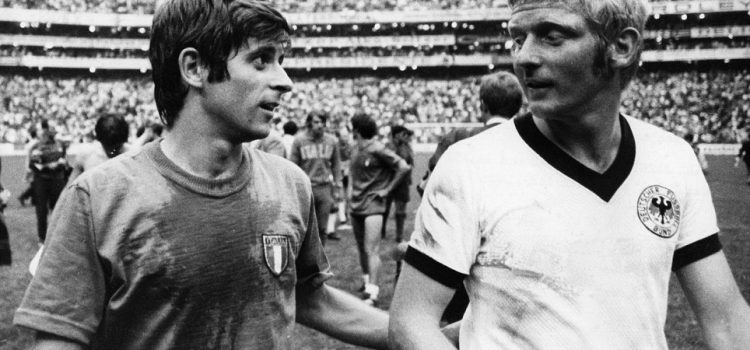Below is the ninth installment of a Euro 2016 column titled “Footé in France” by O-Posts mainstay and top football writer, Adam Gray.
It is Antonio Conte’s Italy, with their Juventus built back four, who possess the solid defensive platform on which a potential Euro 2016 triumph will be built, but Germany head into Saturday’s quarter-final with the Azzurri as the only side remaining in the tournament who are yet to concede a goal.
Italy dethroned Spain in Paris with a performance heavy on resolve and counter-attacking power, but Germany were thoroughly dominant in their demolition of Slovakia in Lille.
With the second round comfortably negotiated, the two powerhouses of European football meet in Bordeaux in what promises to be a fascinating quarter-final.
Although having breezed through with relative comfort, Joachim Low’s Germany had been slow to find their rhythm in the group stages, struggling to find the right attacking combination as a confidence-shot Mario Gotze muddled on in an ill-suited “false-nine” position.
But with the Bayern Munich man dropped for the second-round and Julian Draxler restored to the starting XI after missing out in their final group stage game, they produced arguably the most ruthlessly effective performance of anybody at these finals so far last Sunday.
Italy may contend that with the way their unerringly organised 3-5-2, with Giorgio Chiellini, Leonardo Bonucci and Andrea Barzagli forming a fearsome defensive trio tasked with shielding the goal of the imperiously experienced Gianluigi Buffon, accounted for Belgium in their opening game and overcame Spain in the last 16.
Group C and Slovakia have presented Germany with a benign route to this point, but Italy’s defence, equipped with brawn, vigour, cynicism and the ball-playing ability of Bonucci, showcased in Emanuele Giaccherini’s wonderful opening goal against Belgium, will be a far tougher examination of Die Mannschaft’s credentials.
Conte’s men gave Belgium 56% of the ball in Lyon while Spain were afforded 58% of possession in the Stade de France but the pressure was repelled by an astonishing resilience and an unmovable faith in their game-plan.
Between the 65th and 80th minutes of the last-16 tie, Spain saw 75% of the ball and were dominating territory, but David Silva, Cesc Fabregas and Andres Iniesta simply couldn’t breach Italy’s wall of blue. When they did, Buffon belied his 38 years to spring his lightning reflexes and make an astonishing save from Gerard Pique.
Just over a minute later Graziano Pelle was volleying the ball into David De Gea’s net to make Italy’s passage safe, finishing off a devastating, blink and you’ll miss it transition from defence to attack that holds its roots in Germany’s World Cup win of 2 years ago.
Conte has stated previously that he “doesn’t do counter-attacks or defensive football” but in France it has been used to great effect with Eder and Graziano Pelle, supported by Marco Parolo from midfield, so clear in their roles and comfortable with their instructions that it has almost been hypnotic to watch them work together.
Against Spain, Emanuele Giaccherini popped up in so many different positions he was near-impossible to track and the defending European champions simply couldn’t deal with a first half swarm of high-intensity pressing that had hallmarks of the style Germany utilised so devastatingly in Brazil.
Italy break like a team in perfect harmony with each other and Conte believes the more basic the runs and quicker the speed of the counter, the less chance there is of over-complicating the move.
Italy will face in Germany a similar proposition to the one they faced in Spain, with Toni Kroos, whom Germany boast as the most consistent player at these finals, needed to be kept quiet in the same vein as they managed to shut-out the influence of Sergio Busquets on Monday afternoon.
Low however must discover a way of positioning Thomas Muller close to Mario Gomez in order to trouble Italy’s back three, which may mean Mesut Ozil is shuffled out to the left.
Draxler was brilliant against Slovakia moving in from the flank to create space for Kroos and Ozil and it will be vital that he does so again on Saturday night without sacrificing the width that Low will hope prevents Andrea Florenzi and Matteo De Sciglio from wreaking havoc from wing-back.
Bayern Munich’s highly-rated Joshua Kimmich impressed against Slovakia as he suggested he could be Low’s answer to a problematic right-back position in which centre-half Benedickt Howedes played during the group stages.
Still there is a weakness in centre-midfield, where Kroos and Sami Khedira are still prone to leaving gaping holes, that Giacherrini and Parolo, with the electric Eder dropping off from the attacking focal point Pelle, will seek to exploit in fast breaks.
Daniele De Rossi’s injury however will cause Conte headaches as he looks for the glue that will hold his midfield together, Thiago Motta is of course ineligible after incurring a suspension shortly after emerging from the bench against Spain.
Unless Conte is willing to break up his Juventus defence and move Barzagli or Bonucci into midfield against Germany, there appears not to be an obvious replacement central-midfielder in his squad.
The meticulous Conte, if the win over Spain is to provide any evidence, is sure to have devised a plan to deal with his midfield crisis, even if it means shifting marginally to a 3-4-3 that will heighten Germany’s sense of alert at full-back.
The tactical battle is set to be fascinating, with Germany perhaps more familiar with their opposition’s style than their current incarnation would care to admit.
“They’re not the Italians that we normally know,” Low said. “They’re not only focused on defence but they play very, very well going forward. So … I believe we’ll have a very interesting, highly charged game on Saturday.”
Written by Adam Gray
Follow Adam on Twitter @AdamGray1250
Like O-Posts on Facebook
You can also follow O-Posts on Twitter @OPosts

